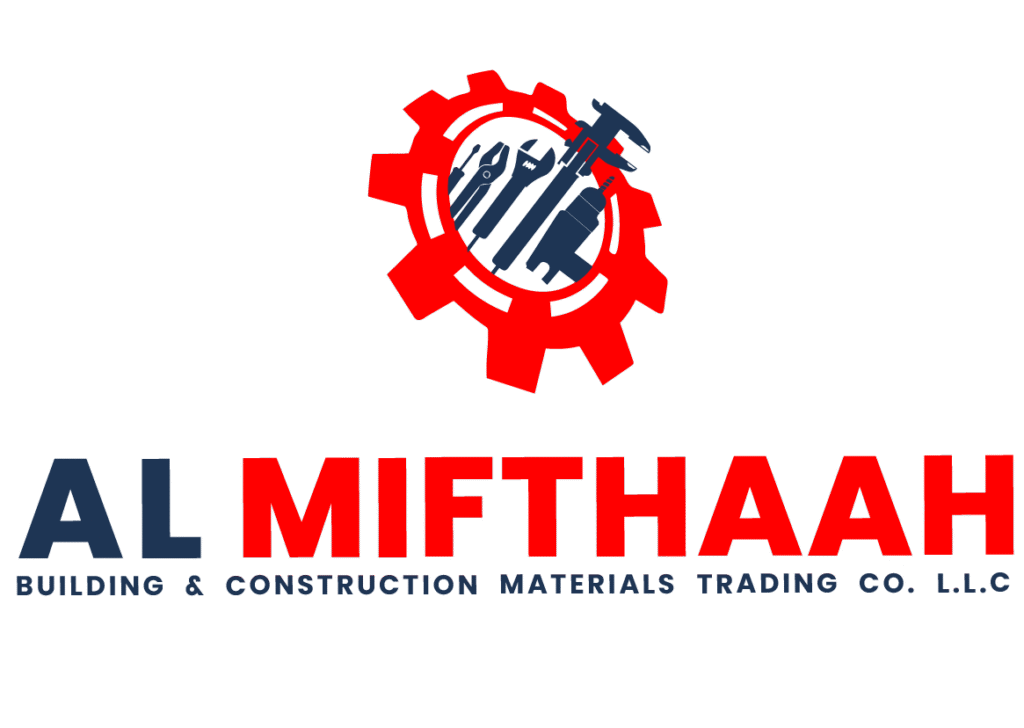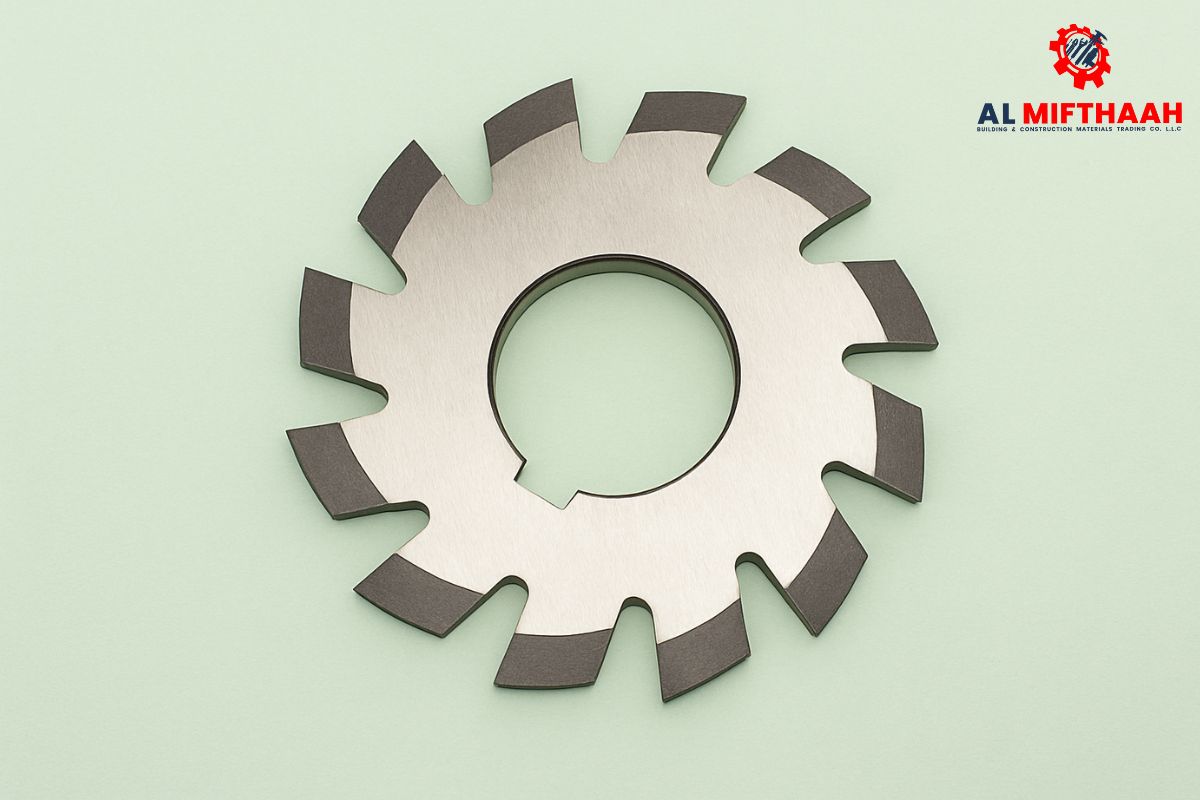- September 26, 2025
- by Almifthaah
Different Types of Gear Cutters and Their Applications
Table of Contents
- What is gear cutting?
- Main types of gear cutters
- Applications of gear cutting
- Benefits of choosing the right gear cutter
- Challenges in gear cutting
- Future of gear cutting technology
- Conclusion
- FAQs
In modern rapidly expanding industries, accuracy matters a lot. Gears are ubiquitous—from automobiles and aircraft to robots and medical equipment. To produce such gears is referred to as gear cutting, using sophisticated machinery and techniques. Without proper gear cutting, machinery would not be able to move properly, nor would it be durable.
However, various kinds of gear cutters are utilized by manufacturers worldwide based on design and purpose. In reality, using the proper tool is as crucial as designing the gear itself. For example, cutting and milling tools Dubai are largely depended on by various industries to accommodate their increasing orders for high-quality gears.
The various types of gear cutters and their corresponding uses in industries are discussed in this blog.
What is gear cutting?
Gear cutting is the act of cutting gears to precise shapes using specialized tools. Gears facilitate the transmission of force and motion from one rotating shaft to another. Precise shapes and dimensions are made possible by operators or automated machines using specialty cutters.
Two primary objectives in gear cutting are:
- Make gears fit snugly into machinery.
- Provide maximum efficiency using as little waste of resources as possible.
Moreover, modern gear cutting is the mix of old methods and innovative CNC technology, which accelerates the process and makes it more dependable.
Main types of gear cutters
Each gear type possesses distinct characteristics, and each gear employs a distinct cutting method. Let’s discuss the five significant types of gear cutters found globally.
- Spur Gear Cutter
Spur gears are the simplest and most widely used. Spur gears possess straight teeth parallel to the axis of the gear. Spur gear cutters are extensively utilized since they:
- Transfer power from parallel shafts.
- Provide a high efficiency with very little energy loss.
- Are best utilized for applications where there is no concern for noise.
Therefore, Spur gear cutters are commonly found in clocks, washing machines, and conveyor systems.
- Helical Gear Cutter
Helical gears consist of teeth that are cut at an angle in the form of a helix. The helical gear cutters can deal with this diagonal tooth configuration. The benefits are:
- Quiet and smooth running.
- Improved load distribution over spur gears.
- Increased lifespan with less wear.
Helical gears find applications in automotive transmissions and industrial machinery where noise attenuation is important.
- Worm Gear Cutter
A worm gear set is a screw-like worm and a wheel. Worm gear cutters are designed to produce this special screw-to-wheel configuration. They are significant because:
- They offer very high gear reduction within limited space.
- The self-locking ability enhances safety in most applications.
- They support heavy loads well.
Furthermore, worm gears are employed in elevators, conveyor belts, and tuning instruments.
- Bevel Gear Cutter
Bevel gears consist of cone-shaped teeth and are employed where shafts intersect, often at right angles. Bevel gear cutters can produce:
- Straight bevel gears for uncomplicated direction change.
- Spiral bevel gears for optimal performance.
They are used in power tools, printing presses, and differential transmissions in automobiles.
- Herringbone Gear Cutter
Herringbone gears appear as two helical gears together in a “V” configuration. These gears reduce side thrust forces and hence are more robust. The important features are
- High capacity to bear loads.
- Smooth and quiet operation.
- Improved alignment compared to the case of single helical gears.
They find extensive applications in marine, heavy-duty machinery, and turbines.
Applications of gear cutting
Gear cutting affects almost every contemporary industry. Following are the principal sectors that rely on the technology:
- Aerospace Industry
- Precision aircraft engine gears.
- Components of navigation and control systems.
- Safety gear that is high-strength yet lightweight.
- Automotive Sector
- Transmission gears for automobiles and trucks.
- Differential gears with improved performance.
- Steering system components for improved control.
- Medical Sector
- Gears for medical imaging equipment.
- Robotic surgical equipment precision parts.
- Devices that have miniaturized, high-accuracy gears.
- Industrial Manufacturing Sector
- Factory conveyor belt systems.
- Industrial machinery gears with heavy-duty applications.
- Power tools and material handling equipment.
Moreover, businesses operating within this industry usually make arrangements with drilling tool providers in the UAE for them to maintain efficient, durable equipment for their gear-cutting applications.
Benefits of choosing the right gear cutter
Using the proper gear cutter not only guarantees efficiency but also saves money. Some of the primary advantages are as follows:
- Increased accuracy in gear production.
- Increased equipment life with high-quality gears.
- Enhanced performance of machines in a variety of industries.
- Lower maintenance and downtime expenses.
However, for companies in the Middle East, it has become imperative to find the best milling tools dealers UAE for their needs, since quality tools ensure increased productivity and accuracy.
Challenges in gear cutting
Similar to any other manufacturing process, gear cutting also poses its own set of challenges:
- Achieving accuracy during mass production.
- Minimizing noise and vibration in high-speed gears.
- Demanding sufficient supply of smaller, high-precision gears.
- Dealing with wear and tear of the gear cutters themselves.
Therefore, these challenges can only be overcome with ongoing innovation and sophisticated machinery.
Future of gear cutting technology
The future of gear cutting also seems bright, with automation, AI, and robotics making their way into the business. Some of the emerging trends are
- Application of 3D printing to prototype gears.
- Implementation of AI to detect errors in real time.
- Environmentally friendly practices to minimize wastage.
Industries will continue to count on high-quality cutting tools and international suppliers to meet the demands.
Conclusion
Gear cutting is the foundation of contemporary machinery, ranging from household appliances to industrial robots. Every type of gear—spur, helical, worm, bevel, and herringbone—has its specific function and calls for a distinctive cutter. Selecting the proper cutter guarantees efficiency, accuracy, and long-term cost savings.
From aerospace to automotive, medical, or manufacturing sectors, gear cutting holds them all together. Companies that are seeking growth need to invest in good tools and trusted suppliers. For example, sectors dealing with cutting and milling tools in Dubai or directly procuring from top milling tool dealers in the UAE can highly enhance gear production quality. Additionally, working with drilling tools suppliers in UAE makes machines run smoothly without hiccups.
However, with the development of technology, gear cutting will be even more accurate, effective, and environmentally friendly—defining the future of innovation in various industries.
FAQs
Spar gear cutter is most commonly used, which offers simple design, high efficiency, easy manufacturing and suitability for parallel shaft applications in industries.
Gear cutting ensures accuracy, efficiency and durability in machines. Accurate gears reduce noise, improve performance, equip the life, and support industries such as motor vehicles, aerospace and medical.


